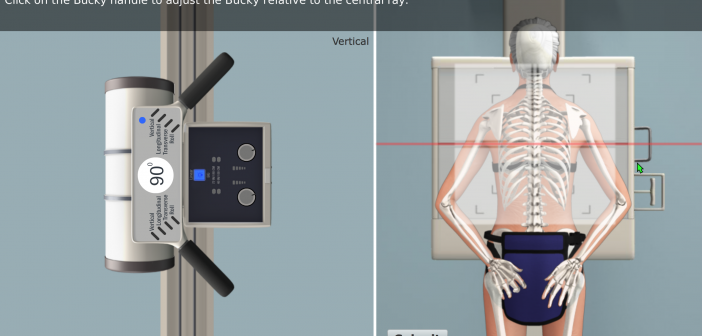The internet has changed everything, and today’s allied health students expect at least some of their learning to take place online. This applies to on-ground programs too, not just online and distance learning programs. Day-to-day access to technology means that your students are used to self-directed activities, and they want to feel in control of their learning activities during formal education programs too.
So as an allied health education professional, how can you best utilize online technologies for teaching and learning?
Here are 11 tips for educators using online resources
After talking to our current customers who are using SIMTICS online simulations in their classes, we have collected 11 general tips to help you make the most of online resources in your allied health education program.
- Look for digital education resources that don’t require you and your students to be technical whizzes – you don’t want the technology to get in the way of the teaching and learning.
- Build the online resources into your curriculum. This just means determining where each resource best fits into the sequence of topics and how you are going to use each one in your program.
- Make it matter to the students – it’s no use investing in a new resource if the students don’t use it. So give them a reason to use each eLearning resource. For instance, include any scores or outputs in the students’ assessments.
- Think about what you will ask the students to do or achieve with each online component. Try to make it fun, too. For instance, an online resource can often be used in pairs and small groups, not only for self-paced learning. Or you could create a competition to achieve the best score or the fewest errors.
- Be clear on how students will be assessed for their online work. Does the product assess and score students’ work automatically, or will you need to do a manual assessment? What will be the pass mark for their online activities? Does the product allow you as the instructor to view your class’s scores and activity? Will you expect the students to complete an activity and print out a report or certificate from the product (if one is provided), or maybe a screenshot showing the activity outcome?
- Consider what components of the product you can use in the classroom as a teaching tool, e.g. to display on a projector to demonstrate something to the class or explore an anatomy model together, then have a group discussion about it.
- Bear in mind that online resources can often be used at different times in your program. This will help you get the most from your investment. As an example, SIMTICS online procedure simulations can be used:
- early on to give students a visual and interactive introduction to one or two basic skills
- during clinical courses, to give the students extra practice opportunities when they are learning and rehearsing procedural skills – they can continue learning at home
- to prepare for a flipped class or a lab, so your students all arrive with a basic and common set of knowledge
- during clinical rotations to supplement the random cases that the students are exposed to in the hospital/clinic environment
- whenever a student needs to refresh their knowledge of a particular procedure
- to keep skills fresh while job-searching (we make SIMTICS available to our customers’ students after they graduate, with our alumni discount.)
- Find resources that will complement hands-on clinical lab sessions and clinical rotations. Students won’t always have access to the lab or a hospital environment, plus they may not see certain cases come through while they’re on a clinical. Online resources and simulations can give them the opportunity to learn and practice a complete range of skills whenever they need to.
- Use online resources to implement a flipped classroom approach. Flipped learning is an excellent use of class time, since students learn online before coming to class or a lab, making it possible to focus on higher order learning when the students and teacher are together.
- Consider whether you want your online resources to integrate with your LMS (Learning Management System). This way the students only need to log in once, to the LMS, and have their scores passed automatically to the grade book. Check that the integration is straightforward and how much time it is likely to take.
- Show your hospital and clinic partners the new online resources that you are using. You may find that they are very impressed that you’re adopting this kind of advanced education technology! This can help you to cement your relationship with them and make your students stand out and be preferred, compared to other schools vying for clinical time at the same sites.
Not why, but when
Both students and teachers are becoming accustomed to continuous and on-demand learning. Students don’t want to be restricted to only being able to learn certain things at certain times or in fixed locations. They demand more control of their learning at the place and time that is most suitable for them.
If you’re not already using online resources for your allied health program, the big question is not why you should adopt eLearning and online simulation technologies, but when.
SIMTICS online simulations for allied health programs
SIMTICS is a leading provider of online simulations for allied health students and professionals. The SIMTICS online solution has been developed by leading academics and practitioners to help students learn clinical and medical imaging procedures anytime and anywhere. It’s like an online flight simulator for learning healthcare procedures in sonography, radiography, medical assisting, phlebotomy, and other allied health programs.
Each SIMTICS module covers one procedure or skill, and features a text description, video demonstration, 3D anatomy model, quiz, and two or three simulation scenarios that can be used to learn, practice and then test skills. All these components are available in one comprehensive package that your students can access from anywhere, not just in class or in the computer lab.
SIMTICS provides instant feedback on each step in the simulations, so the student is guided to perform each procedure correctly. The system tracks study time, completion times, and scores and also logs individual errors, so learners can quickly identify exactly what needs to be worked on. Simulations can also be used in test mode to check competence. Reports are available to instructors, to view class activity and results. For more information or an online demonstration, contact me at [email protected]




